Have you noticed your furry friend feeling sluggish, gaining weight, or experiencing skin issues? It could be hypothyroidism, a common hormonal disorder in dogs. But fret not, understanding its causes, symptoms, and treatments can help your pup lead a healthier, happier life.
Contents Overview
What is Hypothyroidism in Dogs?
Hypothyroidism in dogs is a common endocrine disorder characterized by insufficient production of thyroid hormones by the thyroid gland. The thyroid gland, located in the neck, plays a crucial role in regulating metabolism, energy levels, and various bodily functions. When the thyroid gland fails to produce an adequate amount of thyroid hormones, it leads to hypothyroidism.
Types of Hypothyroidism in Dogs
There are two main types of hypothyroidism in dogs:
- Primary Hypothyroidism: This type occurs when there is dysfunction or damage to the thyroid gland itself, leading to decreased hormone production. Primary hypothyroidism is the most common form seen in dogs and is often caused by autoimmune thyroiditis, where the immune system attacks the thyroid gland, resulting in inflammation and impaired function.
- Secondary Hypothyroidism: Secondary hypothyroidism is less common and occurs when there is a problem with the pituitary gland or hypothalamus, which are responsible for signaling the thyroid gland to produce hormones. Dysfunction in these areas can disrupt the production of thyroid-stimulating hormone (TSH), which in turn affects thyroid hormone production.
Causes of Hypothyroidism
Hypothyroidism in dogs can arise from various factors, ranging from autoimmune disorders to nutritional deficiencies. Understanding the potential causes is crucial for recognizing the condition and implementing appropriate management strategies. Here are the possible causes of hypothyroidism in dogs:
- Autoimmune Thyroiditis:
- Description: Autoimmune thyroiditis is the most common cause of hypothyroidism in dogs, particularly in breeds like Golden Retrievers, Doberman Pinschers, and Irish Setters.
- Mechanism: In autoimmune thyroiditis, the immune system mistakenly targets and attacks the thyroid gland, leading to inflammation and destruction of thyroid tissue.
- Impact: This immune-mediated destruction impairs the thyroid gland’s ability to produce an adequate amount of thyroid hormones, resulting in hypothyroidism.
- Congenital Hypothyroidism:
- Description: Some dogs may be born with congenital hypothyroidism, also known as cretinism.
- Mechanism: Congenital hypothyroidism can occur due to genetic abnormalities or developmental defects that affect the thyroid gland’s formation or function.
- Impact: Dogs with congenital hypothyroidism typically exhibit symptoms early in life, such as stunted growth, developmental delays, and neurological abnormalities.
- Thyroid Tumors:
- Description: Tumors or neoplasms affecting the thyroid gland can disrupt hormone production and lead to hypothyroidism.
- Types: Thyroid tumors may be benign (non-cancerous) or malignant (cancerous). Benign tumors, such as adenomas, can still interfere with thyroid function if they grow large enough to impair glandular tissue.
- Impact: Tumor growth can compress surrounding thyroid tissue, impairing hormone synthesis and secretion. Additionally, malignant tumors may infiltrate healthy thyroid tissue and disrupt normal function.
- Iodine Deficiency:
- Description: Iodine is an essential micronutrient required for thyroid hormone synthesis.
- Mechanism: Inadequate dietary iodine intake can impair the thyroid gland’s ability to produce thyroid hormones, leading to hypothyroidism.
- Impact: Iodine deficiency is rare in dogs fed commercial diets, as most commercial pet foods are formulated to meet iodine requirements. However, dogs fed homemade or unbalanced diets may be at risk of iodine deficiency and subsequent hypothyroidism.
- Medications:
- Description: Certain medications can interfere with thyroid function and contribute to hypothyroidism in dogs.
- Examples: Drugs such as corticosteroids, phenobarbital (used to treat seizures), and sulfa drugs have been associated with thyroid dysfunction.
- Mechanism: These medications may disrupt thyroid hormone synthesis, secretion, or metabolism, leading to decreased thyroid hormone levels.
- Impact: Prolonged use of medications that affect thyroid function may increase the risk of hypothyroidism in susceptible dogs.
- Other Factors:
- Environmental Toxins: Exposure to environmental toxins, such as certain pesticides, heavy metals, or industrial chemicals, may impact thyroid function and contribute to hypothyroidism.
- Infectious Diseases: In rare cases, infectious diseases affecting the thyroid gland, such as bacterial or fungal infections, may lead to hypothyroidism.
- Trauma or Surgery: Trauma to the thyroid gland or surgical removal of the gland (thyroidectomy) can result in hypothyroidism if a sufficient amount of functional thyroid tissue is compromised or removed.
Symptoms of Hypothyroidism in Dogs
Recognizing the symptoms of hypothyroidism in dogs is crucial for early detection and prompt treatment. This condition can manifest in various ways, affecting multiple body systems. Here are the common symptoms of hypothyroidism in dogs:
- Weight Gain:
- Dogs with hypothyroidism often experience unexplained weight gain, despite maintaining a regular diet or even decreased appetite.
- The weight gain is typically gradual and may be accompanied by a loss of muscle tone.
- Lethargy and Fatigue:
- Hypothyroid dogs often appear lethargic, lacking their usual energy levels and enthusiasm for activities.
- They may seem reluctant to engage in exercise, preferring to rest or sleep more than usual.
- Hair Loss and Dull Coat:
- A hallmark sign of hypothyroidism is bilateral symmetrical hair loss, particularly on the trunk, tail, and hindquarters.
- The coat may become thin, dry, and brittle, losing its normal luster and sheen.
- Dry, Flaky Skin and Skin Infections:
- Dogs with hypothyroidism may develop dry, flaky skin that is prone to irritation and itching.
- Secondary skin infections, such as bacterial or yeast dermatitis, may occur due to compromised skin barrier function.
- Cold Intolerance:
- Hypothyroid dogs may exhibit intolerance to cold temperatures, seeking warmth and comfort by curling up in warm spots or near heat sources.
- They may shiver or tremble in response to cold environments, even when adequately dressed.
- Muscle Weakness and Exercise Intolerance:
- Dogs with hypothyroidism may experience muscle weakness, making it difficult for them to engage in physical activities.
- They may tire easily during exercise and exhibit reluctance to participate in strenuous activities or long walks.
- Slow Heart Rate (Bradycardia):
- Hypothyroidism can affect the heart rate, leading to bradycardia or a slower-than-normal heart rate.
- A veterinarian may detect bradycardia during a physical examination or routine check-up.
- Behavioral Changes:
- Dogs with hypothyroidism may exhibit changes in behavior, such as increased irritability, depression, or reduced responsiveness to stimuli.
- They may seem less engaged with their surroundings and less interested in social interactions.
- Gastrointestinal Symptoms:
- Some dogs with hypothyroidism may experience gastrointestinal symptoms, including constipation, decreased appetite, or occasional vomiting.
- These symptoms are less common but may occur in conjunction with other signs of hypothyroidism.
- Reproductive Issues (in Females):
- Female dogs with hypothyroidism may experience reproductive abnormalities, including irregular heat cycles, infertility, or difficulty conceiving.
- Hypothyroidism can disrupt hormonal balance, affecting reproductive function in intact female dogs.
Diagnosis of Hypothyroidism
Diagnosing hypothyroidism in dogs involves a combination of clinical evaluation, laboratory tests, and sometimes additional diagnostic procedures. Since the symptoms of hypothyroidism can overlap with other health conditions, a comprehensive approach is essential for accurate diagnosis. Here’s what you need to know about the diagnosis of hypothyroidism in dogs:
- Clinical Evaluation:
- A thorough physical examination is the first step in diagnosing hypothyroidism. Your veterinarian will assess your dog’s overall health, evaluate symptoms, and look for physical signs suggestive of thyroid dysfunction, such as weight gain, hair loss, and skin abnormalities.
- History and Symptom Assessment:
- Your veterinarian will inquire about your dog’s medical history, including any previous health issues, medications, and changes in behavior or symptoms.
- Providing detailed information about your dog’s symptoms, including their onset, duration, and progression, can help guide the diagnostic process.
- Blood Tests:
- Blood tests are essential for evaluating thyroid function in dogs. The two main blood tests used to diagnose hypothyroidism are:
- Thyroid Panel: This panel typically includes measurement of total thyroxine (T4), free thyroxine (fT4), and thyroid-stimulating hormone (TSH) levels in the blood. Low T4 levels and high TSH levels are indicative of hypothyroidism.
- Free T4 by Equilibrium Dialysis (fT4ED): This test measures the concentration of free (unbound) thyroxine in the blood, providing a more accurate assessment of thyroid function, especially in cases where total T4 levels may be affected by other factors.
- Additional Diagnostic Tests:
- In some cases, additional diagnostic tests may be necessary to confirm the diagnosis of hypothyroidism or rule out other underlying conditions. These tests may include:
- Thyroid Antibody Testing: Testing for thyroid autoantibodies, such as thyroglobulin autoantibodies (TgAA) or thyroid peroxidase autoantibodies (TPOAA), can help identify autoimmune thyroiditis as the underlying cause of hypothyroidism.
- Ultrasound Imaging: Ultrasound examination of the thyroid gland can assess its size, shape, and internal structure, helping identify structural abnormalities or nodules indicative of thyroid disease.
- Fine-Needle Aspiration (FNA) Biopsy: In cases of thyroid nodules or tumors, FNA biopsy may be performed to obtain a tissue sample for microscopic examination and further characterization.
- Response to Treatment Trial:
- In some cases, if diagnostic tests are inconclusive or borderline, a response to treatment trial with synthetic thyroid hormone supplementation may be considered.
- Administering thyroid hormone replacement therapy to see if symptoms improve can help confirm the diagnosis of hypothyroidism.
- Consultation with Specialists:
- In complex or challenging cases, your veterinarian may recommend consultation with a veterinary internal medicine specialist or endocrinologist for further evaluation and management.
Treatment Options of Hypothyroidism
Managing hypothyroidism in dogs typically involves lifelong treatment to supplement thyroid hormone levels and alleviate symptoms. Fortunately, there are effective treatment options available to help dogs with hypothyroidism lead healthy, fulfilling lives. Here are the main treatment options for hypothyroidism in dogs:
- Hormone Replacement Therapy:
- The primary treatment for hypothyroidism in dogs is hormone replacement therapy with synthetic thyroid hormones.
- The most commonly prescribed medication for this purpose is levothyroxine sodium, a synthetic form of the thyroid hormone thyroxine (T4).
- Levothyroxine tablets are typically administered orally once or twice daily, depending on the individual dog’s needs.
- The goal of hormone replacement therapy is to restore thyroid hormone levels to normal, alleviating symptoms and improving overall well-being.
- Dietary Management:
- While diet alone cannot cure hypothyroidism, a balanced and nutritious diet can support overall health and complement hormone replacement therapy.
- Some veterinarians recommend diets formulated specifically for dogs with thyroid conditions, which may include added antioxidants, omega-3 fatty acids, and other beneficial nutrients to support thyroid function and skin health.
- Avoiding goitrogenic foods, which may interfere with thyroid function, is also advisable. These include foods like soybeans, broccoli, cabbage, and certain types of kale.
- Regular Monitoring and Adjustments:
- Once hormone replacement therapy is initiated, regular monitoring of thyroid hormone levels is essential to ensure the effectiveness of treatment.
- Veterinarians typically recommend periodic blood tests to assess thyroid hormone levels and adjust medication dosage as needed.
- Monitoring may initially be more frequent to establish the optimal dosage, with less frequent testing once stable thyroid hormone levels are achieved.
- Lifestyle Management:
- Maintaining a healthy lifestyle is important for dogs with hypothyroidism to support overall well-being.
- Regular exercise helps manage weight, improve muscle tone, and promote cardiovascular health. However, it’s essential to tailor exercise routines to the individual dog’s energy level and physical capabilities.
- Providing a comfortable environment, including a warm bed and shelter from extreme temperatures, can help alleviate cold intolerance symptoms.
- Complementary Therapies:
- Some dog owners may explore complementary therapies or alternative treatments to support their pet’s health alongside conventional veterinary care.
- These may include supplements such as omega-3 fatty acids, vitamin E, and herbal remedies believed to support thyroid function and immune health.
- However, it’s important to consult with a veterinarian before incorporating any new therapies to ensure they are safe and appropriate for your dog’s specific needs.
- Surgical Treatment:
- In rare cases where thyroid tumors or nodules are present and causing significant symptoms or complications, surgical removal of the affected thyroid tissue may be considered.
- Thyroidectomy (surgical removal of the thyroid gland) may be performed by a veterinary surgeon in specialized cases. However, this approach is less common and typically reserved for specific situations where other treatment options are not feasible or effective.
Prevention and Management Strategies
Preventing and managing hypothyroidism in dogs involves a combination of proactive measures aimed at supporting overall health and minimizing risk factors for thyroid dysfunction. By implementing preventive strategies and adopting healthy lifestyle practices, pet owners can help reduce the likelihood of hypothyroidism development and effectively manage the condition in affected dogs. Here are some key prevention and management strategies:
- Regular Veterinary Check-ups:
- Schedule annual wellness exams with your veterinarian to monitor your dog’s overall health and detect any early signs of thyroid dysfunction or other health issues.
- Routine blood tests may be recommended as part of preventive care to assess thyroid hormone levels and screen for underlying health conditions.
- Balanced Diet:
- Feed your dog a balanced and nutritious diet formulated to meet their specific nutritional needs.
- Choose high-quality commercial dog foods that provide essential nutrients, vitamins, and minerals necessary for optimal thyroid function and overall health.
- Avoid feeding goitrogenic foods, such as soybeans, cabbage, and certain cruciferous vegetables, which may interfere with thyroid function.
- Regular Exercise:
- Incorporate regular physical activity into your dog’s routine to promote cardiovascular health, maintain muscle tone, and manage weight.
- Engage in daily walks, playtime, and interactive games to keep your dog active and mentally stimulated.
- Tailor exercise routines to your dog’s age, breed, size, and individual energy level, ensuring they get adequate physical activity without overexertion.
- Weight Management:
- Maintain a healthy weight for your dog to reduce the risk of obesity-related health issues, including hypothyroidism.
- Monitor your dog’s food intake and adjust portion sizes as needed to prevent excessive weight gain or obesity.
- Consult with your veterinarian for personalized dietary recommendations and weight management strategies tailored to your dog’s needs.
- Environmental Toxin Avoidance:
- Minimize your dog’s exposure to environmental toxins, such as pesticides, herbicides, and industrial chemicals, which may disrupt thyroid function.
- Store household chemicals, cleaning products, and garden supplies out of reach of pets, and use pet-safe alternatives whenever possible.
- Be cautious when using flea and tick control products, opting for veterinarian-recommended products that are safe and effective.
- Stress Management:
- Minimize stressors in your dog’s environment and provide a safe, comfortable living space where they feel secure.
- Incorporate enrichment activities, such as puzzle toys, interactive games, and positive reinforcement training, to keep your dog mentally stimulated and engaged.
- Be mindful of changes in routine, environment, or household dynamics that may cause stress or anxiety in your dog, and take steps to mitigate their impact.
- Routine Dental Care:
- Maintain good oral hygiene by brushing your dog’s teeth regularly and providing dental treats or toys to promote dental health.
- Schedule routine dental cleanings as recommended by your veterinarian to prevent dental disease and associated health issues that may impact overall well-being, including thyroid health.
- Prompt Veterinary Care:
- Seek prompt veterinary attention if you notice any changes in your dog’s behavior, appetite, energy level, or physical appearance.
- Early detection and treatment of health issues, including thyroid dysfunction, can help prevent complications and improve outcomes for your dog.
Bottom Line
Hypothyroidism can impact your dog’s quality of life, but with early detection and proper management, they can thrive. By understanding the causes, recognizing the symptoms, and seeking timely veterinary care, you can ensure your furry companion enjoys a happy, healthy life by your side. Stay vigilant, stay informed, and always prioritize your pet’s well-being.

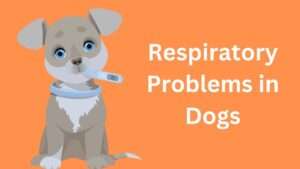













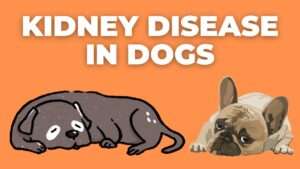

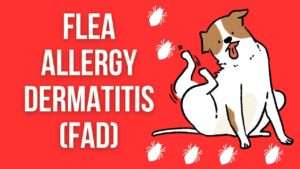
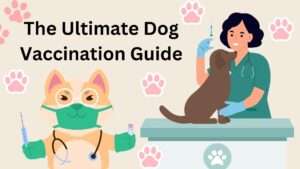

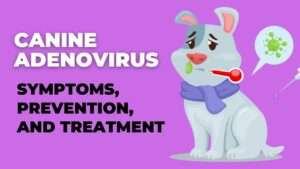
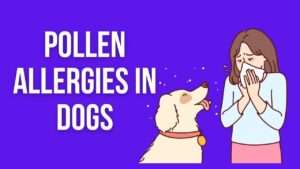



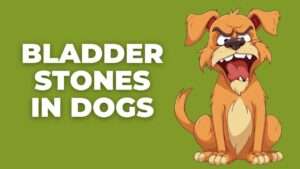
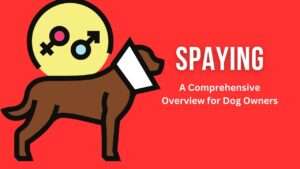








+ There are no comments
Add yours